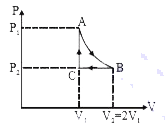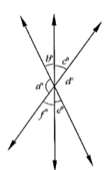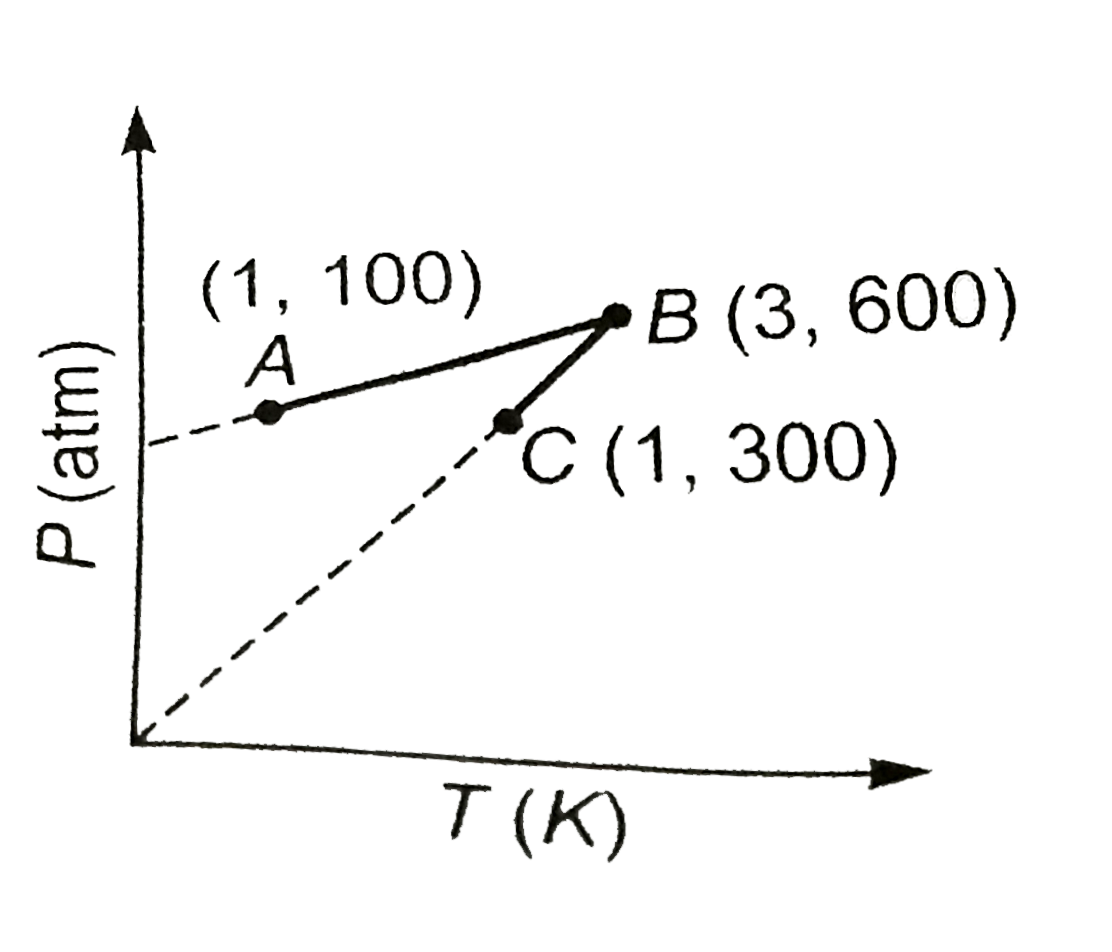For 1 mole of ideal gas which of the following statements must be true
a) U & H depend only on temperature
b) Compressibility factor (Z) can not be 1.
c) Cp−Cv =R
d) △U=CvdT for all processes
a,c,d
b,c,d,
c,d
a,c
The correct Answer is:A
To solve the question regarding the properties of an ideal gas, we will analyze each statement one by one.
Step 1: Analyze Statement A
Statement A: U & H depend only on temperature.
- Explanation: For an ideal gas, the internal energy (U) and enthalpy (H) are functions of temperature only. This is because the internal energy of an ideal gas is related to the kinetic energy of the gas molecules, which depends solely on temperature. Similarly, enthalpy is also a function of temperature for an ideal gas.
- Conclusion: This statement is true.
Step 2: Analyze Statement B
Statement B: Compressibility factor (Z) cannot be 1.
- Explanation: The compressibility factor (Z) is defined as Z = PV/RT. For an ideal gas, this relationship holds true, and thus Z = 1. Therefore, it is incorrect to state that the compressibility factor cannot be 1 for an ideal gas.
- Conclusion: This statement is false.
Step 3: Analyze Statement C
Statement C: Cp−Cv=R
- Explanation: For an ideal gas, the difference between the heat capacities at constant pressure (C_p) and constant volume (C_v) is equal to the gas constant R. This is a fundamental relationship in thermodynamics for ideal gases.
- Conclusion: This statement is true.
Step 4: Analyze Statement D
Statement D: ΔU=CvdT for all processes.
- Explanation: The equation ΔU=CvdT is valid for processes where the heat capacity at constant volume (C_v) is applicable, such as in a constant volume process. However, this relationship does not hold true for processes that are not at constant volume (e.g., isothermal processes). Therefore, it is not universally applicable to all processes.
- Conclusion: This statement is false.
Final Conclusion
From the analysis:
- Statement A is true.
- Statement B is false.
- Statement C is true.
- Statement D is false.
Thus, the true statements for one mole of an ideal gas are A and C.
Summary of Answers:
- A: True
- B: False
- C: True
- D: False
Statement A: U & H depend only on temperature.
- Conclusion: This statement is true.
Statement B: Compressibility factor (Z) cannot be 1.
- Conclusion: This statement is false.
Statement C: Cp−Cv=R
- Conclusion: This statement is true.
Statement D: ΔU=CvdT for all processes.
- Conclusion: This statement is false.
From the analysis:
- Statement A is true.
- Statement B is false.
- Statement C is true.
- Statement D is false.
- A: True
- B: False
- C: True
- D: False
Similar Questions
For one mole of an ideal gas, which of these statements must be true ?
(a) U and H each depends only on temperature
(b) Compressibility factor x is not equal to 1
(c) Cp,m−CV,m=R
(d) du=CVdT for any processView SolutionDetermine which of the following statements are true at very high pressure for a real gas:
(a) Compressibility factor is greater than 1.
(b) Compressibility factor varies linearly with pressure.
(c) Molar volume occupied by gas is more as compared to ideal gas at similar pressure and temperature.
(d) Gas is less compressible as compare to ideal gas.
(e) Compressibility factor is given by
Z=1+PbRT.View Solution
Knowledge Check
- Question 1 - Select One
Assertion: Cp can be less than CV.
Reason: CpCV=R is valid only for ideal gases.AIf both assertion and Reason are true and the Reason is the correct explanation of the assertion.BIf both assertion and Reason are true but the reason is not the correct explanation of the assertionCIf assertion is true but reason is falseDIf both assertion and reason are false. - Question 2 - Select One
Assertion : Compressibility factor (Z) is the ratio of actual molar volume of a gas to the molar volume of it , if it were an ideal gas at that temperature and pressure .
Reason : At high pressure all the gases have Z lt 1 and can be easily compressed .AIf both assertion and reason are true and reason is the correct explanation of assertion .BIf both assertion and reason are true but reason is not the correct explanation of assertion .CIf assertion is true but reason is false .DIf both assertion and reason are false . - Question 3 - Select One
n mole a perfect gas undergoes a cyclic process ABCA (see figure) consisting of the following processes.
A→B: Isothermal expansion at temperature T so that the volume is doubled from V1 to V2=2V1 and pressure changes from P1 to P2
B→C : Isobaric compression at pressure P2 to initial volume V1
C→A : Isochoric change leading to change of pressure from P2 toP1 .
Total work done in the complete cycle ABCA is :
 A0BnRT(ln2+12)CnRTln2DnRT(ln2−12)
A0BnRT(ln2+12)CnRTln2DnRT(ln2−12)
In Figure, which of the following statements must be true? (i) a+b=d+c (ii) a+c+e=1800 (iii) b+f=c+e (a) (i) only (b) (ii) only (c) (iii) only (d) (ii) and (iii) only
 View Solution
View SolutionMatch Column-I with Column -II :
Column-I Column-II
(A) The highest temperature at which liquid CO2 exists ( p ) VrealVideal
( B ) 8a / 27 Rb ( q) Critical temperature
(C ) Compressibility factor Z=3/8 at ( r ) Ideal gas
( D ) Compressibility factor Z =1 for ( s) 30.98∘CView SolutionWhich of the following is true for the molar heat capacity of an ideal gas?
1.It cannot be negative
2.It has only two values (CPandCV)
3.It can have any value
4.It cannot be zeroView SolutionWhich one among the following is the correct option for right relationship between Cp and Cv for one mole of ideal gas?
View Solution
One mole of an ideal gas is subjected to a two step reversible process (A-B and B-C). The pressure at A and C is same. Mark the correct statement(s) :View Solution

